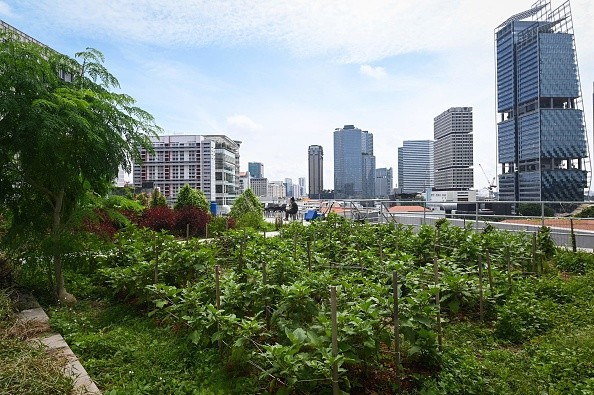According to climate experts at NASA's Goddard Institute for Space Studies (GISS) in New York, rooftop gardens and vegetation can help alleviate several of the city's extreme heat.
For generations, scientists have advocated for the replacement of black tar and other pitch-black roofing shingles with brighter, sun-reflecting coverings or "green roofs" with native vegetation.
They have now utilized publicly available spatial information to assess the effectiveness of these adjustments.
Green rooftops in such urban places

The urban heat island effect described how heat is frequently enhanced or amplified in cities, as cited by ScienceDaily.
Since asphalt, concrete, and materials trap and hold substantially more heat than vegetation, temperatures in cities are frequently 10 degrees Fahrenheit higher than in neighboring towns or rural regions.
This heat typically disproportionately impacts elderly persons, low-income groups, and some people of color in communities with lesser trees and green spaces.
The GISS team investigated three Chicago locations to evaluate how green roofs influenced surface temperatures surrounding buildings or whether there was a distinction between these sites and many others nearby that did not have green roofs.
Two of the three green roofs in the research decreased temperatures, although the data suggested that performance may be affected by site and vegetation diversity, among other variables.
The findings have now been reported in the journal Sustainable Cities and Society.
As communities evolve over time, they must make sound infrastructure decisions, which can endure 30 to 50 years or more, according to Christian Braneon, a climate scientist and civil engineer at Columbia University and GISS.
It is essential to comprehend how all these urban design initiatives might be effective in the setting of more frequent heatwaves and more harsh heat.
Braneon and the GISS team collaborated with Chicago's Public Health and Planning and Development departments to investigate three locations that had rooftop gardens erected in the early 2000s: Millennium Park, Town Hall, and a Walmart retail mall.
Rooftop gardens and their benefits
A roof garden is any form of vegetation that is grown on a building's roof.
Aside from being aesthetically pleasing, roof gardens also provide aesthetic embellishment, climate management, leisure activities, wildlife habitats, and food sources.
Rooftop farming is the practice of planting food on a rooftop.
Box gardens, air-dynaponics systems or aeroponics, hydroponics, or green roofs are commonly used, as per AZO Cleantech.
In addition to the roof space, additional platforms are known as "aero-bridges" can be created among high-rise structures.
Benefits of rooftop gardens include minimized CO2 emissions, provided oxygen, reduced building electricity and heat costs, promoted wildlife habitat, and lowered air temperature.
Types of roof gardens
An extensive roof garden is a form of roof garden that needs only a thin layer of soil base and is thus simple to maintain. These gardens are ideal for use as storehouses, garages, roofs, or other outbuildings surrounding the home.
At the same time, it has less aesthetic value due to the limited varieties of vegetation that grow on it.
Lichen and moss are the perfect plants for this style of garden.
Lichen may grow on a variety of surfaces, including plastic, metal, and glass. Moss, on the other side, is a little plant that needs fewer nutrients and a high level of soil dampness to develop.
Intensive roof gardens are the sort of garden that can be planted with vegetation comparable to that of a backyard garden, such as flowers, shrubs, trees, and various park components.
However, because this roof garden needs massive, stable structures, most buildings are unsuitable for extensive roof gardens.
It needs specific attention during watering, in addition to normal maintenance requirements.
© 2025 NatureWorldNews.com All rights reserved. Do not reproduce without permission.





